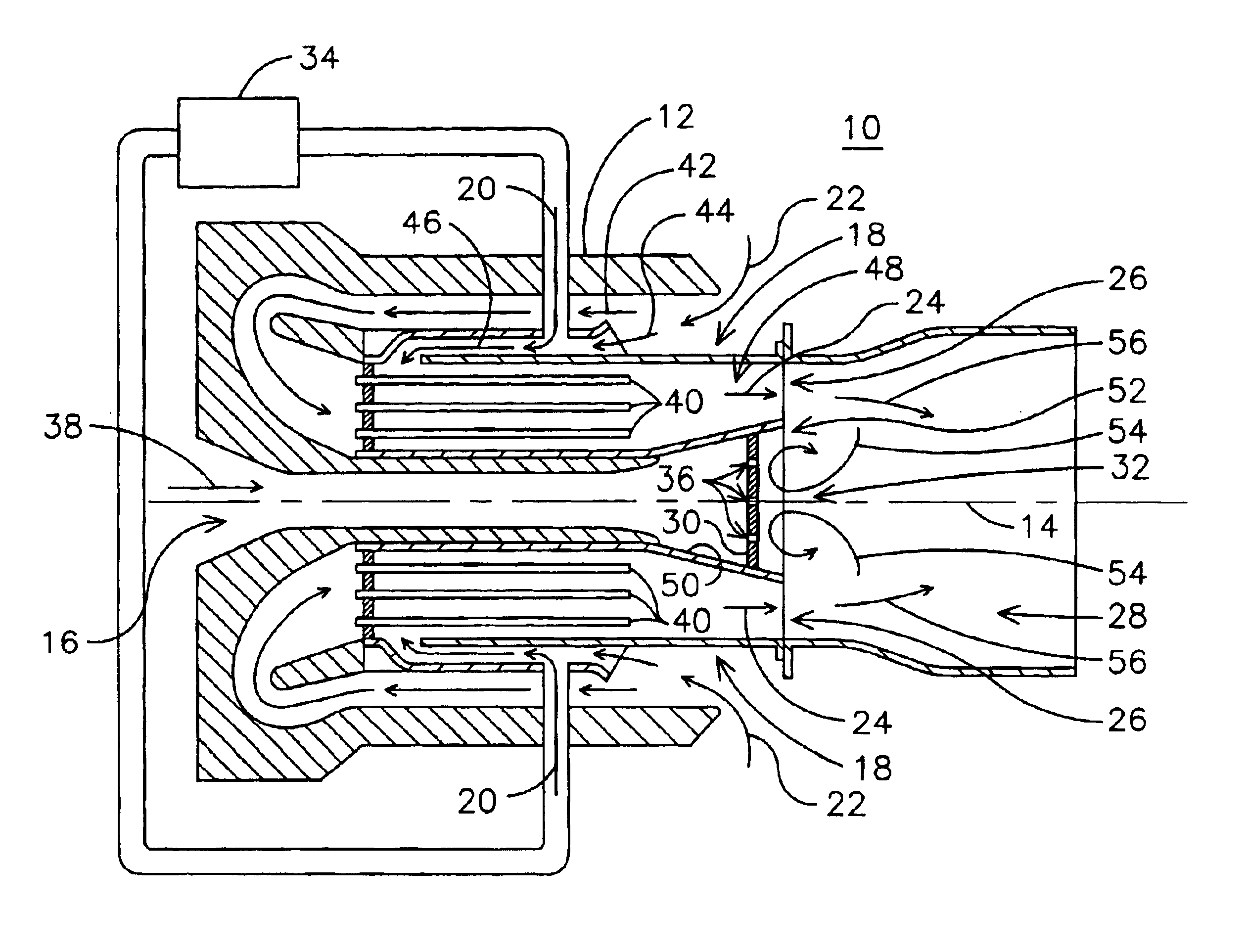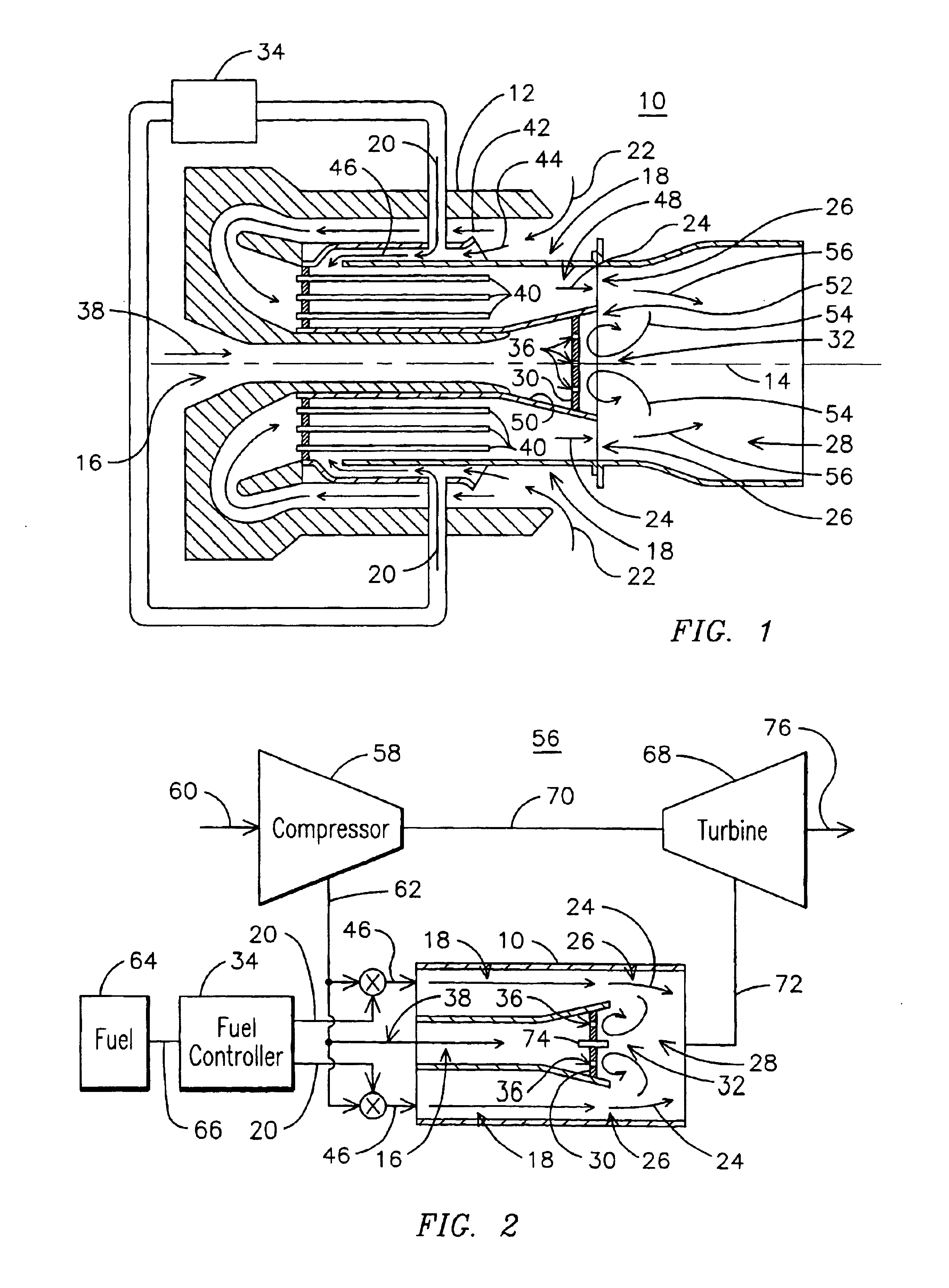Pilotless catalytic combustor
a combustor and pilot technology, applied in the direction of machines/engines, lighting and heating apparatus, furnaces, etc., can solve the problems of increasing the generation of oxides of nitrogen, complicated design of the combustor of the turbine engine, and low power operation at lower combustion temperatures
- Summary
- Abstract
- Description
- Claims
- Application Information
AI Technical Summary
Benefits of technology
Problems solved by technology
Method used
Image
Examples
Embodiment Construction
[0009]FIG. 1 illustrates a cross section of a pilotless combustor 10 including a plurality of catalytic combustion modules 18 arranged around a central core region 16. The combustor includes a combustor basket 12 having a central axis 14 for retaining the combustion modules 18 circumferentially installed in the combustor basket 12, radially outward of the central core region 16. Each combustion module 18 receives a fuel flow 20 and a first portion of an oxidizer flow 22. In a backside cooling embodiment, the first portion of an oxidizer flow 22 may be split into an oxidizer mixing flow 44 for mixing with the fuel flow 20 and a oxidizer cooling flow 42 for cooling catalytic elements 40. For example, the catalytic elements 40 may include tubes coated with a catalyst on a tube outside diameter surface. The oxidizer mixing flow 44 and the fuel flow 20 can be mixed to form a fuel / oxidizer mixture 46. In one aspect of the invention, the fuel / oxidizer mixture 46 is directed to flow around ...
PUM
 Login to View More
Login to View More Abstract
Description
Claims
Application Information
 Login to View More
Login to View More - R&D
- Intellectual Property
- Life Sciences
- Materials
- Tech Scout
- Unparalleled Data Quality
- Higher Quality Content
- 60% Fewer Hallucinations
Browse by: Latest US Patents, China's latest patents, Technical Efficacy Thesaurus, Application Domain, Technology Topic, Popular Technical Reports.
© 2025 PatSnap. All rights reserved.Legal|Privacy policy|Modern Slavery Act Transparency Statement|Sitemap|About US| Contact US: help@patsnap.com


